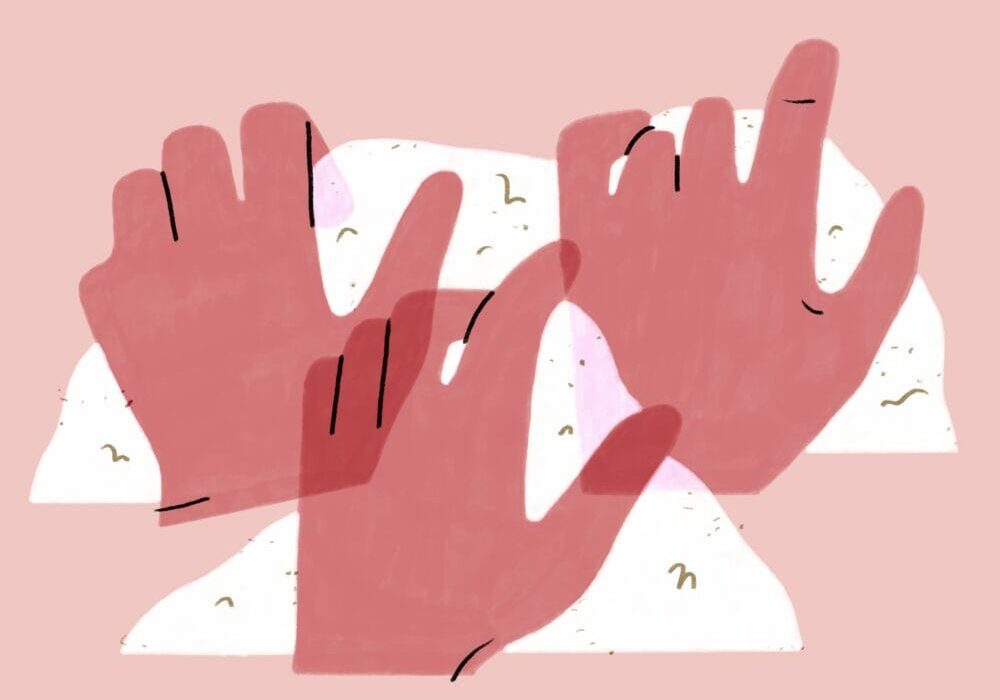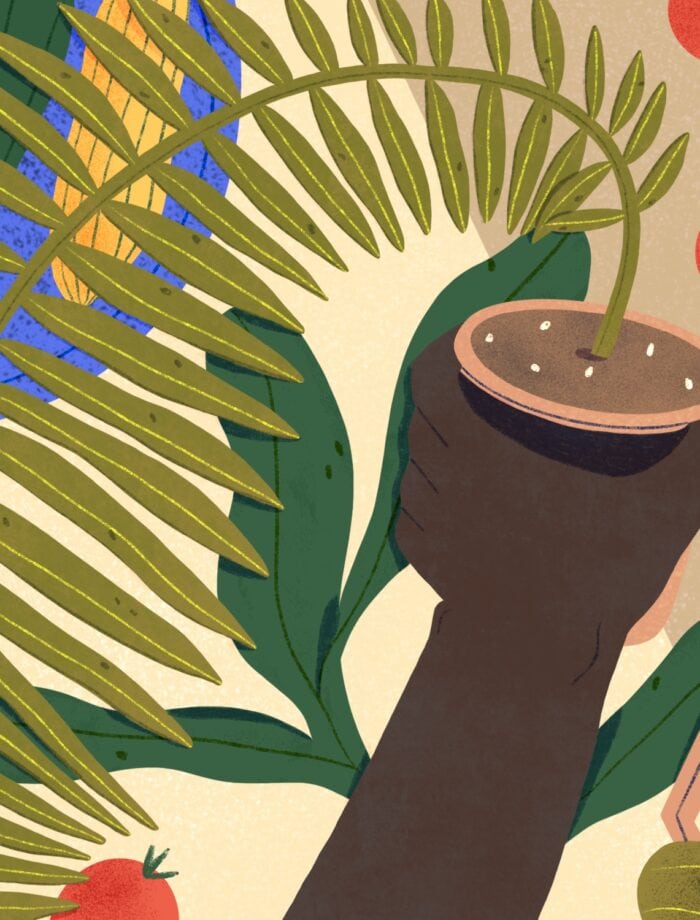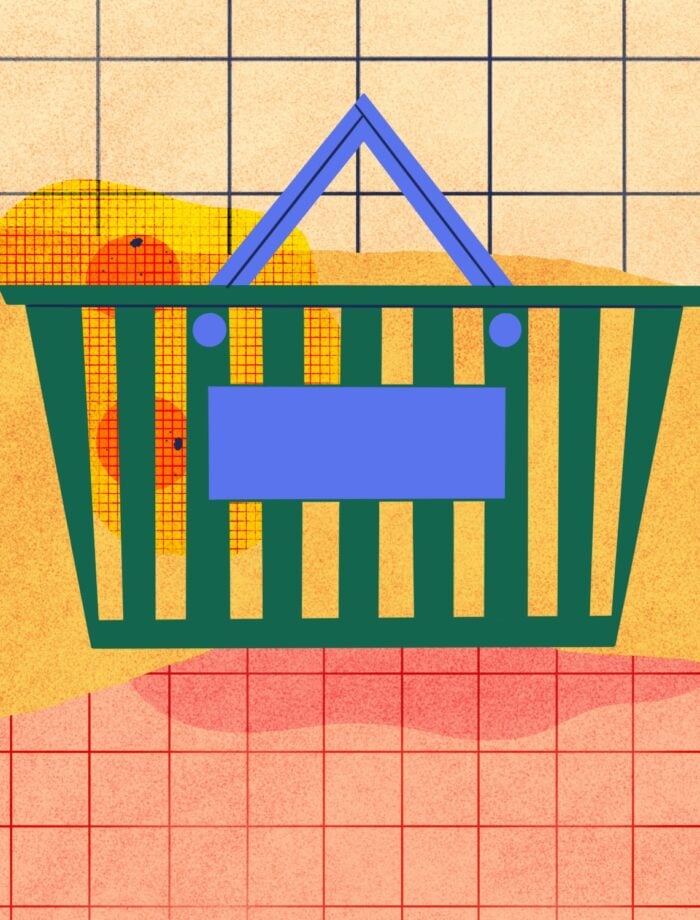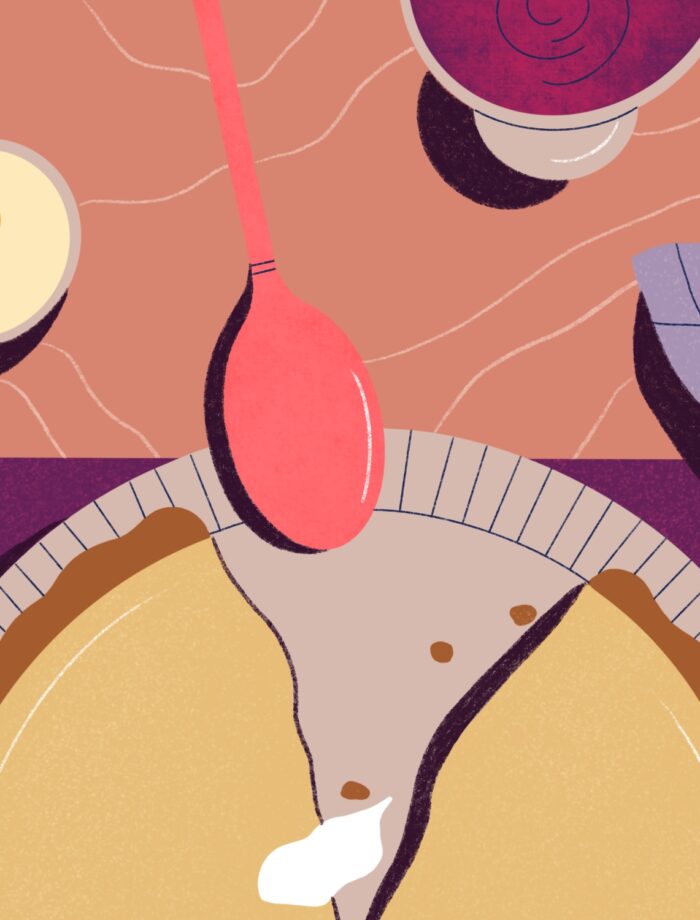Three years ago, Tori and her family made the decision to re-home her 6 chickens and 4 ducks. At the beginning of the pandemic, Tori found managing her flock of birds along with raising her three daughters (currently aged 6, 9, and 12) were just too many living things to take care of. She decided the best step forward was to give them away to a neighbor who was eager to start their own homesteading journey.
I called Tori just after she had popped a batch of homemade granola in the oven. Her family lives on a farm in rural Washington. I wanted to learn more about their experience practicing sustainable living at home. Tori explained that she loves the process of problem solving but maintaining sustainable habits became especially tricky during the pandemic, specifically when it came to their habits around food. Typically, her daughters would bring their lunch to school packed in reusable containers. However, through a school program, the girls were provided with lunches which made ensuring they were well fed easier on the family. The downside was that they had less control over the excess packaging. “How do you pick which things to prioritize when you’re in survival mode?” Tori wondered.
Sustainable living is by no measure a new concept. However, social media platforms like Instagram, TikTok, Pinterest and YouTube have created niche virtual spaces where people can widely share their attempts to tread more lightly on the planet. As the urgency for climate action increases, many individuals are feeling the pressure to change their behaviors quickly. With that pressure often comes an unhealthy compulsion towards perfectionism that has left many of us feeling burnt out and frustrated that we’re never doing enough.
“How do you pick which things to prioritize when you’re in survival mode?”
Recently, there’s been a shift where more people are beginning to release themselves from the unrealistic social media-fueled expectations of sustainability. At the same time, we still understand there is a role for individual actions to play in the bigger picture. Even still, the path to sustainable living is rarely a straight line. Adopting new patterns of any kind requires some amount of trial and error. With that in mind, what does it mean to navigate the iterative process that is sustainable living?
Jessica, 30, lives in Jamaica with her parents and started composting in 2019. Her first attempt involved burying a bucket in her yard which allows the organic waste to decompose in a controlled area underground. This worked for her family for less than a year until they noticed the rotting food was attracting pests. She decided to pivot to another method of composting that utilized a tumbler. Unfortunately, she had to pause composting at home when the weight of the compost caused the structure of the tumbler to fall apart.
Jessica’s parents were open to participating in the composting process by adding their food scraps to a bin in the kitchen. However, as they get older and have more physical limitations, they can’t be as involved in the labor of composting. Still, Jessica’s mother began to notice just how much organic waste the family was generating. They sometimes found themselves throwing away food before it could be eaten so she adjusted her grocery shopping routine to reduce unnecessary food waste. Her mother also uses the compost they make for her garden and has observed a difference in her flowers.
Even though Jessica’s family was willing to troubleshoot and they’ll continue to look for a solution that works for their family, composting is not a widespread practice where they live. The task of figuring out how to make it work all lies on the individual. “It’s hard to navigate how to be sustainable on our own,” said Jessica. She believes it would be easier on her family if there was composting infrastructure in their town, but for now, they’re willing to make a special effort to do it themselves.
For some, it isn’t the lack of access to sustainable options but the cultural norms of the people around us that keep us from adopting more sustainable behaviors. Sarah, 34, lives with her in-laws in Seattle. They reliably recycle and compost because the city makes it easy for them to do so. Curbside recycling is free to residents and curbside composting is available for a monthly fee. However, her in-laws seem to be most motivated by whether what is being asked of them is easy, convenient, and cheap. “They just do what they’re supposed to do and nothing more,” Sarah explains. In the future, she and her husband both would like to continue exploring areas where they can make sustainable choices around the house but without buy-in from her in-laws, her extra efforts often get squashed. For now, they’re focused on maintaining what’s working well in their household until they can find another way forward.
Although we might be motivated to pursue sustainable habits, our surroundings might not set us up for success. The expectations of people around us and the infrastructure available to us often have a greater impact on our ability to live sustainably than our individual passions for protecting the environment do. Forward progress requires both policy and cultural change to see the results we hope for. Meanwhile, for those of us who have the option to experiment with our individual behaviors, our approach to sustainable living needs to adapt to our unique circumstances.
Leila, almost 20, is a college student living in Los Angeles. Of all the places she’s lived, Leila thinks being sustainable on her college campus in Los Angeles is easiest. She’s found that her classmates and the surrounding community are typically making a similar effort as her to incorporate sustainable practices into their personal lives. At home with her family, it isn’t so simple despite them generally valuing sustainability. When her family moved from Seattle to the San Juan Islands, they lost access to the composting infrastructure that was much more accessible when they lived in a major city. A habit they had once regularly implemented is no longer part of her family’s routine.
For now, they’re focused on maintaining what’s working well in their household until they can find another way forward.
Meanwhile, both she and her mother have an autoimmune disease which means they take multiple medications to maintain their health. She told me she initially didn’t feel included in the mainstream expectations of sustainable living because it wasn’t possible to eliminate the plastic waste from the pill bottles. Health was a far more pressing priority. However, she still wanted to do what she could. She asked her family if they would be willing to make the shift to more sustainable cleaning products. Leila was able to use the research skills she learned in school to find reliable information that would help convince her family it would be safe to use cloth rags and a homemade cleaning spray. Her family got on board and it’s a habit they still maintain.
In our home in Seattle, my partner and I (30 and 29 respectively) routinely compost our food waste and shop for pantry staples in bulk at a local zero waste grocery store. These are routines that we started before moving to Seattle but they have been made infinitely easier due to the curbside composting provided by the city and the popularity of zero waste grocery stores where we live. However, even with these amenities, we still often struggle with wasting food.
Like Jessica’s family, we find ourselves composting food that we forgot about in the fridge or can’t figure out how to use before they go bad. While my partner is completely on board with sustainable living, we still have to work as a team to find a rhythm that works for both of us. We both struggle with object permanence (remembering that something exists when it’s not immediately visible) so after a bit of troubleshooting, we implemented a whiteboard system where we track what’s in our fridge so we remember what needs to be eaten. We’ll still find half of a moldy onion at the back of our fridge and we’ll continue to try new ideas to make sure all the food we buy actually gets eaten.
After reading Zero Waste Home by Bea Johnson, Leah, 43, was immediately all-in on the idea of a zero waste lifestyle. She found herself making homemade yogurt and nut milk to accommodate the dietary needs of herself (a vegetarian), her husband (gluten-free and dairy-free), and her very particular six and a half year old son even though she found it incredibly time consuming. During the pandemic, she expressed frustration in how her go-to grocery store limited their bulk goods section which made it difficult for her to cut back on single-use packaging that she works so hard to avoid. She realized just figuring out how to feed her family was leaving them exasperated.
We still have to work as a team to find a rhythm that works for both of us.
Now, she believes she’s finally found a healthy balance where she buys her pantry staples in bulk while her son still gets to enjoy Doritos with his friends from time to time. After years of finding their way in Seattle, Leah’s family will be moving to New York this summer. She’s excited to furnish her new home with secondhand items. Although they won’t be starting completely from scratch, they’ll have to find a renewed sense of balance and adjust their routines to fit their new environment.
Back on the farm, Tori recently returned to chicken ownership. She’s also found ways to include her daughters in the development of sustainable habits. For example, they made their own reusable cotton pads together. She sees her girls are more quick to notice when they are making waste outside the home. Normalizing habits like these has allowed them to understand sustainability more deeply. “I can see the wheels turning”, she acknowledged. Although on the chicken front, they’ve essentially circled back to the same place they were three years ago, they’ve also made progress to further normalize sustainable practices for the next generation.




